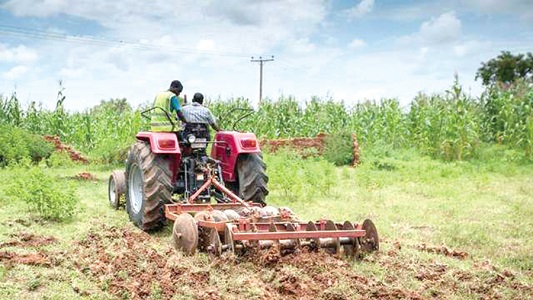
Prioritise agricultural sector investment in IMF engagement
It is now official that the government of Ghana has commenced engagement with the International Monetary Fund (IMF) for an economic bailout.
The engagement, according to the government, will seek to provide a Balance of Payment Support (BOP) as part of broader support for a build-back of the economy in the face of challenges induced by Covid-19 and the Russia-Ukraine crisis.
Advertisement
At the moment, data from the Bank of Ghana (BoG) indicates that Ghana’s foreign reserves have dropped to USD $8.3 billion from USD $9.7 billion at the end of 2021.
At the same time, Ghana’s debt also rose to 78 per cent of GDP as at the end of March 2022, while inflation is quoted at 27.6 per cent, and 18-year high largely behind is the surge in food prices and transport fares.
With this official announcement, it is the second bailout from the same institution since 2015 and comes three years after the completion of the earlier package. A number of questions curiously comes to mind with this development.
Prioritising agric
While abstaining from the usual partisan political debate provoked by the development, it is important to ask; what were the priorities of the earlier bailout and how successfully were they implemented in respect of sustainable economic impact? Which sectors for investment will drive real sustainable build-back and growth, going into the next engagement?
I will answer the latter question by advocating strongly for the central government to prioritise investment in the agricultural sector in order to drive real sustainable build-back and growth, going into our next engagement.
Historically, and drawing from the success stories of many developed countries, there are demonstrable evidences of the relation between agriculture and sustainable economic growth.
Best practices
The Green Revolution in Asia emphasised the potentials of agriculture in contributing to economic growth. In Many developing countries such as Ghana, where the agricultural sector, according to the Food and Agricultural Organisation (FAO) accounts for about 52 per cent of the workforce and roughly 25 per cent of the value added in the economy – growth in agricultural productivity can cause significant aggregate effects and therefore influence the general economic growth within a country.
Prioritising and investing in the agricultural sector, as prerequisite for the economic build-back and growth, is justified based on three essential tasks that agriculture performs in the process of economic growth: the product role, the factor role and the market role.
Essential tasks
The product role refers to the goods provided by the agricultural sector and is in two-fold: it feeds the population and provides foreign currency when agricultural products are exported to other countries.
The product role is central in food problem theory. Low-income countries are unable to develop since most people have to spend a high percentage of their income and labour to procure food.
Simply stated, it is only after the productivity in the agricultural sector has increased and agricultural output has grown, that a country can further develop itself and start a process of modern economic growth. This profoundly states an idea of causality: increases in agricultural productivity must precede economic growth.
The factor role in agriculture refers to the supply of manpower and capital to other sectors, such as the industry and the service sector. It needs to be noted that based on the dual-sector approach, there is a labour productivity differential between the agricultural (subsistence) sector and the non-agricultural sector.
With this, economic growth in developing countries is unable to take-off as long as labour is allocated in sectors with a low marginal product of labour, such as agriculture. Therefore, higher agricultural productivity also increases the income of the rural population, raising demand for (domestic) industrial output.
Lastly, the market role refers to agriculture as an outlet for products from the manufacturing sector. Via this market function, increases in agricultural productivity contribute to economic development.
Agricultural demand-led industrialisation builds upon the market role. A development strategy based upon such an agricultural demand-led industrialisation is more favourable for the development of economies than a development strategy that focuses on export-led industrialisation.
Elaborate strategy
In conclusion, having an elaborate strategy, the President needs to prioritise and invest in the agricultural sector, as prerequisite for the economic build-back and growth. Therefore, I propose that the engagement be specifically guided by the following:
1. Greater part of any financial package resulting from the engagement should be channelled into the agricultural sector for farm level interventions, improvement in farm roads, dedicated agricultural commodities transport services and standard storage facilities.
2. Any conditionality from the engagement should not be focused on the agricultural sector but rather target fiscal consolidation efforts in other sectors either than agriculture.
Good luck to the Economic Management Team as they commence yet another engagement with the Fund with the hope that they will be guided by the above to avoid what brought us to the current bitter decision in the future when the nation successfully completes this in the coming years.
The writer is an agriculture economist and food security consultant. He is also a PhD candidate in Agricultural Economics at UDS, Tamale.




